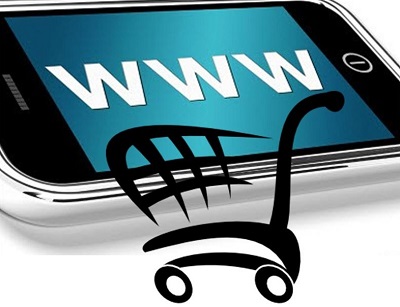Study highlights a paradigm shift in the mobile commerce space
A new study from Forrester Research, Shop.org, and Bizrate Insights shows that smartphones are beginning to become powerful mobile commerce tools. The study has found that consumers are beginning to change the way they browse for products online while using their mobile devices. This, alongside a shift in investments coming from technology companies and better optimization strategies from retailers, is beginning to have a major impact on the mobile commerce space as a whole.
Retailers are seeing more activity come from smartphones rather than tablets
The study found that, among retailers, smartphones accounted for approximately 17% of all online sales made in 2015. By comparison, tablets comprised 14% of online sales last year. Sales via smartphones grew by 53% over what they had been in 2014, with sales from tablets seeing a modest 32% growth in 2014. Retailers are beginning to optimize their mobile engagement strategies, which has lead to a higher number of smartphone users to participate in mobile commerce.
Technology companies are beginning to change the way they invest in the mobile sector
 The study also found that there is a shift occurring in the investments that technology companies are making in the mobile space. A growing number of these companies are beginning to focus more heavily on mobile commerce, hoping to take advantage of the rapidly growing market. Companies like Apple and Google are bringing their own mobile payments services to new markets and retailers are beginning to follow suit. Technology companies are seeing major promise in the continued growth of the mobile commerce market are investing to ensure its continued expansion.
The study also found that there is a shift occurring in the investments that technology companies are making in the mobile space. A growing number of these companies are beginning to focus more heavily on mobile commerce, hoping to take advantage of the rapidly growing market. Companies like Apple and Google are bringing their own mobile payments services to new markets and retailers are beginning to follow suit. Technology companies are seeing major promise in the continued growth of the mobile commerce market are investing to ensure its continued expansion.
Retailers begin to focus more heavily on smartphones
Tablets had been a very popular mobile shopper platform for consumers in the past. These devices feature larger screens, which allowed for a more enjoyable shopping experience. Smartphones are becoming more popular among consumers, however, as these devices tend to be more common and more convenient shopping experience. Organizations involved in the mobile commerce space may soon focus more heavily on smartphones than other mobile devices in order to effectively engage consumers.

 The total online spending last year had been $303 billion in the U.S. That said, according to the BI Intelligence Mobile Checkout Report, by 2020, that figure will be considerably greater. Consumers will be spending an estimated $632 billion online and 45 percent of that will have been through mobile channels.
The total online spending last year had been $303 billion in the U.S. That said, according to the BI Intelligence Mobile Checkout Report, by 2020, that figure will be considerably greater. Consumers will be spending an estimated $632 billion online and 45 percent of that will have been through mobile channels.